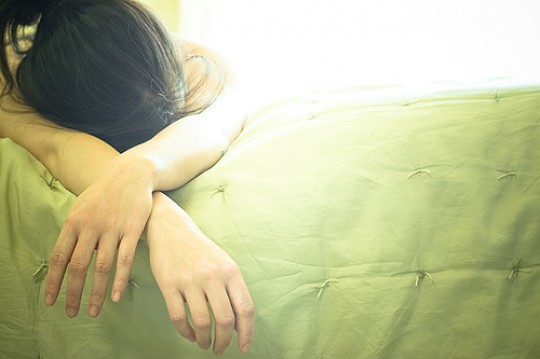Ask Stanford Med: Rafael Pelayo answers questions on sleep research …
Ask Stanford Med: Rafael Pelayo answers questions on sleep research and offers tips for ‘springing forward’

Changes to our sleep schedules like the upcoming change to daylight saving time can make it hard to fall or stay asleep. In an effort to help you spring forward and stay on track, Stanford’s Rafael Pelayo, MD, recently took questions on sleep research and offered techniques for making sure disruptions like daylight saving time don’t cut into your sleep.
Below are Pelayo’s responses to a selection of questions submitted using the hashtag #AskSUMed, @replies to the @SUMedicine feed or the comments section here on Scope.
Erin asks: I’m the mom of a toddler and would love your suggestions for how to help him deal with the time change. In addition, my husband is a real night owl and tends to suffer every year when we “spring forward.” How can people whose bodies don’t like early mornings adjust to the time change?
Unless your toddler needs to wake up at a set time, for example to go to childcare, your child will most likely self-correct. If your toddler does need to wake up at a set time, these tips may be useful in making the transition smoother for him when the clocks change Sunday.
But your night owl husband is a different situation. It is very difficult to go to bed early and much easier to stay up later. I would suggest he, and others with a similar problem, use the following tips to minimize the impact of the time shift. Go to bed 15 minutes earlier for a few nights preceding the time change. Make sure to avoid light as much as possible within an hour or two of going to sleep in order to adjust to an earlier bedtime. If possible, refrain from sleeping late during the weekend and rise within a few minutes of your usual wake-up time on workdays. Keeping the same wake time will help maintain the body’s internal circadian rhythm. Upon awakening, immediately maximize your exposure to sunlight. If you’re fatigued during the day take a short afternoon nap.
@ChilunjeZ asks: I can’t seem to ever get an early night no matter what I try. I always tend to go to sleep after midnight. How can I develop healthy habits to help me get to bed at an earlier time and wake up earlier the next morning?
It is important to remember that you did not always go to sleep after midnight so this is a behavior that you are capable of changing. Past studies have shown that your biological clock is located in an area of the brain called the “suprachiasmatic nucleus.” This clock sets your sleep schedule tendency based on a series of time givers called “zeitgebers.” Zeitgebers can be manipulated to adjust your sleep time.
To change your sleep-wake behavior, I recommend that you focus more on the specific time you want to wake up in the morning rather than the time you want to go to sleep at night. It is easier to force yourself to wake up, than it is to fall asleep. Generally speaking, humans have peak alertness about two hours before falling asleep. So it is extremely difficult to make large, abrupt shifts our bedtime. Instead, try locking in a wake-up time of about 30 minutes earlier than usual for one week. The following week, move the wake-up time back another 30 minutes. Continue making these gradual adjustments over a period of time. Eventually, your wake-up time will predict the time you fall asleep. As you’re making these adjustments to your sleep schedule, keep in mind that it is very important to lock in the same wake-up time on weekends and weekdays.
@benthos asks: What is the “normal” pattern of sleep? Should rapid eye movement (REM) typically be followed by deep sleep or waking (as seen on the Zeo sleep tracking device)?
Normal sleep should make you feel refreshed upon awakening. The description of sleep in different types such as REM, or slow wave, is a useful system of thinking about sleep. But keep in mind that this is an artificial description of mostly electrical activity measured on the scalp. A system like the Zeo is analogous to an oceanographer that only looks at the waves above the water and does not look inside the actual ocean. In the future, as we develop better tools and understanding of sleep in deeper areas of the brain, the current system may have to be revised.
The typical sleep pattern for adults is to have the first brief REM period 60 to 90 minutes after falling asleep. Deep sleep is also called slow wave sleep or delta sleep. Delta sleep precedes REM. Delta sleep is only about 10 percent of the total sleep time and REM is about 20 to 25 percent. The bulk of sleep is stage 2. This pattern repeats itself with progressive longer REM periods throughout the night and shorter delta sleep periods. While delta sleep dominates the first third of the night, REM sleep dominates the last third of the night. If you wake up too early, you are typically cutting off your REM time.
@skeptikai asks: Is it possible to train yourself to not need as much sleep? Or, is that bad for your health?
Let me answer your question with another question: Can you train yourself to need less oxygen? Of course not. And, just like oxygen getting adequate sleep is essential to your well-being.
The real issue here is not to think of sleep as an inconvenience that needs to be minimized. Instead, think of it as the cornerstone of your health. If you attempt to train yourself to require less sleep then you may become sleep deprived, which can be torturous and bad for your health. Give sleep as much priority as nutrition and exercise.
Overall, the amount of sleep you need to be refreshed should stay about the same over time. However if you have certain medical problems your need for sleep may increase as a consequence of your health condition or illness. For example, if you have mild sleep apnea you might need to increase your sleep time. However, you may find that as a result of addressing the actual medical problem you need less sleep.
@dmap02 asks: How can someone overcome dependency on sleep aids? I was initially prescribed medication for intermittent insomnia but now I use it for persistent sleep problems.
The most effective treatment, in my experience, for chronic insomnia is Cognitive Behavioral Therapy for Insomnia (CBT-I). CBT-I is an approved method for treating insomnia without the use of medication. Here is a great online resourceposted by my colleague Rachel Manber, PhD.
@ABCarleial asks: What can a person do to breathe easier, reduce restlessness and improve their sleep other than taking medicine or undergoing surgery?
If your question about breathing refers to sleep apnea, snoring or sleep disordered breathing, I would start off with a visit to a board certified sleep physician ideally at an American Academy of Sleep Medicine certified sleep center. At a sleep center, a physician can make an accurate diagnosis and discuss specific treatments.
In general, the vast majority of patients that come to a sleep clinic for a breathing related problem will improve. To improve breathing you need a physical examination to determine the actual cause and possibly participate in a sleep study. Treatment options may include positive airway therapy and oral appliances in addition to surgery and medications. I strongly encourage you not to put off an evaluation because of concerns about treatments. I often see patients who say they wished they had taken care of their problem sooner. Here is a link for more information.
@Thedodgeretort asks: I use continuous positive airway pressure (CPAP). I have adjusted it many times but still wake up several times a night. Do you have any suggestions on how can I sleep whole night through?
Something is wrong, but I don’t have enough information to pinpoint it. Did you wake up several times at night before you started on CPAP? CPAP has changed a lot over the past few years. Are you using an automatic/ smart machine? I tend to favor the newer smart machines because they adjust the pressure breathe by breathe throughout the night. These new models will also record the nightly use and pressure settings. The data is similar to having a limited nightly sleep study. With the newer CPAP units you should be able to download this data and make decisions accordingly.
Most likely the issue is that the machine pressure is not correct or that the mask is not fitted correctly. There are dozens of different masks available. Another potential problem is that the heated humidifier is not being used or is defective. The durable medical company that sold you the machine or the physician that prescribed it should be working aggressively with you to correct this problem. If they are not, seek treatment an American Academy of Sleep Medicine certified sleep center.
By Lia Steakley
Stanford University Medical Center
Photo by Frederic Poirot
###
* Stanford University Medical Center integrates research, medical education and patient care at its three institutions – Stanford University School of Medicine, Stanford Hospital & Clinics and Lucile Packard Children’s Hospital.
** The above story is adapted from materials provided by Stanford University School of Medicine
________________________________________________________________




















